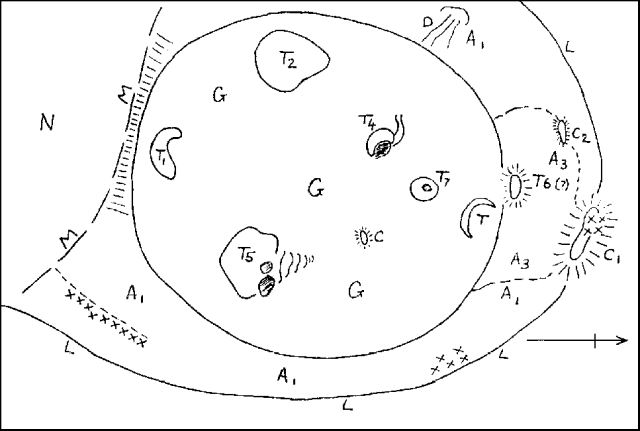Report on Ol Doinyo Lengai (Tanzania) — January 1988
Scientific Event Alert Network Bulletin, vol. 13, no. 1 (January 1988)
Managing Editor: Lindsay McClelland.
Ol Doinyo Lengai (Tanzania) Lava from crater floor vents; small new cones
Please cite this report as:
Global Volcanism Program, 1988. Report on Ol Doinyo Lengai (Tanzania) (McClelland, L., ed.). Scientific Event Alert Network Bulletin, 13:1. Smithsonian Institution. https://doi.org/10.5479/si.GVP.SEAN198801-222120
Ol Doinyo Lengai
Tanzania
2.764°S, 35.914°E; summit elev. 2962 m
All times are local (unless otherwise noted)
The following is a compilation of reports from visits on 4 February, 7 August, 9-10 September, 6 November, and 5 December 1987.
The crater activity . . . continued through December 1987. The distribution of minor vents on the crater floor remained similar from February to early December. The most significant feature formed over the observation period was a 5-m-high lava tower (T5 in figure 4) first seen (at 3 m high) in November. During the November observations, two vents were visible at the N side of the lava tower base and, within 2 hours, three small flows were emitted from one of the vents. When hot, the lava was black, but it cooled to a creamy tan. Each flow was ~10-20 m long and 2-3 m wide. Liquid lava was being emitted from at least one vent in August and from several vents in September and November; no surface flows were seen on 5 December. A small cone had formed on the N crater rim (probably between July 1984 and June 1985), and another ~3/4 of the way up the N wall of the crater was seen in November (C2 in figure 4). It appeared that lava had flowed down a nearby section of the N crater wall from vents ~3/4 of the way up the wall (D in figures 3 and 4). Some of the crater floor lava formations appeared to be accumulated spatter. Levees remained on the crater floor from lava flows, and numerous ropy flows were present. Fume was reported from a cone on the crater rim and cracks around it in September. On the December trip noise like "ocean surf" could be heard from two vents
Geological Summary. The symmetrical Ol Doinyo Lengai is the only volcano known to have erupted carbonatite tephras and lavas in historical time. The prominent stratovolcano, known to the Maasai as "The Mountain of God," rises abruptly above the broad plain south of Lake Natron in the Gregory Rift Valley. The cone-building stage ended about 15,000 years ago and was followed by periodic ejection of natrocarbonatitic and nephelinite tephra during the Holocene. Historical eruptions have consisted of smaller tephra ejections and emission of numerous natrocarbonatitic lava flows on the floor of the summit crater and occasionally down the upper flanks. The depth and morphology of the northern crater have changed dramatically during the course of historical eruptions, ranging from steep crater walls about 200 m deep in the mid-20th century to shallow platforms mostly filling the crater. Long-term lava effusion in the summit crater beginning in 1983 had by the turn of the century mostly filled the northern crater; by late 1998 lava had begun overflowing the crater rim.
Information Contacts: C. Nyamweru, Kenyatta Univ.


